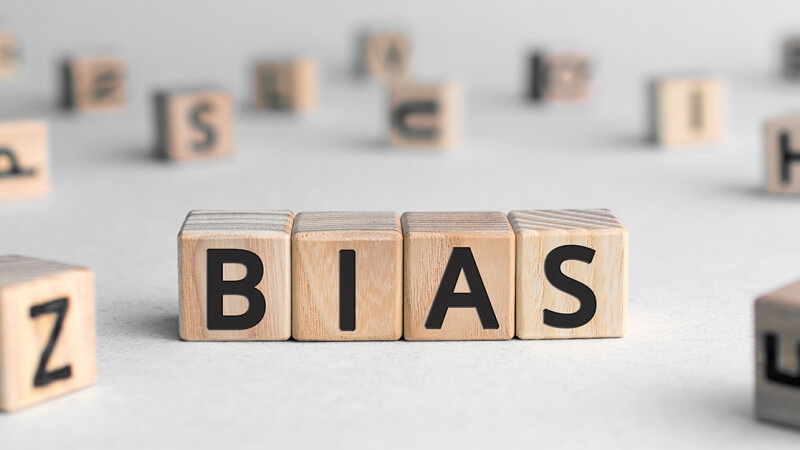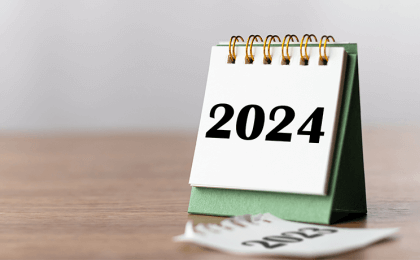No hiring manager or HR professional wants to make biased decisions, but unconscious bias in hiring decisions is unavoidable. Whose resumes catch our eye, who we connect with during interviews, how we shortlist people for promotions—all of these little “gut decisions” are often filled with unconscious biases in disguise.
In this article, we’ll define and unpack unconscious bias while covering some of the research that proves just how pervasive it is. We’ll review why unconscious bias in hiring may hinder your organization in more ways than you thought, and what you and your team can do to make unbiased, objective hiring decisions that make your company more diverse, more productive, and more profitable.
Definition of Unconscious Bias
The word “unconscious” refers to thoughts, feelings or sensations that we are not aware of and cannot perceive. They are, by definition, not intentional. “Bias”, of course, is prejudice that’s personal and, oftentimes, unreasonable.
An unconscious bias, also known as an implicit bias, happens when our brain automatically makes snap judgments based on our upbringings, our backgrounds, our past experiences, and more. A conscious bias is deliberate and easy to identify. But unconscious biases are insidious and easily ingrained into well-established decision-making strategies. That means you may not realize when you’re making biased choices, even if you’re trying extra hard to be fair.
One Yale University study revealed that scientists (both male and female) who had undergone training on how to hire objectively still preferred to hire men, viewed them as more skilled, and offered to pay them $4,000 more annually. When these scientists were informed of the findings, they were shocked by their own bias. They had been totally unconscious of them.
Of course, all of this doesn’t mean that unconscious bias can’t be addressed and mitigated. But we can’t simply wish to be more fair. Even good training on hiring without bias may fall short.
Types of Unconscious Bias
Unconscious bias is an umbrella term for a variety of different biases. Here are some of the ones you and your team should be aware of:
- Intuition or “trusting our gut”, which allows us to make decisions intuitively instead of considering all the facts.
- Confirmation bias, which happens when we make a snap decision about a candidate and then take actions to support our initial beliefs, like asking non-essential (and irrelevant) interview questions or overlooking red flags.
- Affect heuristic, a shortcut your brain takes to make decisions quickly based on your current emotions.
- Halo effect, a bias when we let something shiny about a candidate—maybe a degree from an Ivy League university—blind us from the other facts that may indicate they’re not a good fit for a role.
- Horn effect, the halo effect’s opposite, is another bias that happens when one negative thing overshadows all the good qualities about a candidate.
- Affinity bias, which is when we gravitate toward someone because we share something—maybe a mutual friend or the same alma mater. These connections may be special, but they don’t indicate someone will perform well in a given role.
- Beauty bias, which happens when we make judgments about a candidate based on how attractive they are.
- Conformity bias, which occurs when we unknowingly alter our decisions to match the opinion of the majority, like other hiring managers or a board of directors.
- Gender bias, another problematic bias where we show preference for a certain gender based on embedded beliefs, chemistry, and more.
These are just some of the many, many unconscious biases that pop up during the recruiting, interviewing, and decision-making processes in hiring.
What Problems does Unconscious Bias Cause in the Workplace?
Unconscious biases during the hiring process are both ethically concerning and bad for a company’s bottom line. Implicit biases that start during the recruitment process can affect people’s entire careers. For example, if female candidates aren’t taken seriously during resume review, they won’t get hired… making it impossible for them to score the right promotions, making it less and less likely they’ll ever reach the top.
The truth is that diverse companies perform better. Organizations with diverse executive teams are one-third more likely to enjoy above-average profits. The same research also indicates that the businesses with gender diverse executive teams (top 25th percentile) were 15 to 21% more likely to be more profitable than average.
Plus, for every tiny, 1% increase in a workplace’s diversity, there is a notable boost in sales revenue. For gender diversity, it’s a 3% increase. For cultural diversity, the increase is 9%.
There are also some astonishing studies about implicit bias during the hiring process itself. One study conducted in 2003 still gets press today because its findings were so disconcerting. MIT and UChicago researchers submitted 5,000 identical resumes responding to jobs in Boston and Chicago, using random names that sounded stereotypically white or African American. The fake applicants with white-sounding names received 50% more requests to interview for the open positions.
Another study conducted by Harvard and Princeton researchers revealed that when symphonies started holding “blind” auditions, female musicians were suddenly 50% more likely to move to the next round of auditions.
How to Reduce Unconscious Bias During Hiring
There are many ways to reduce unconscious bias during the hiring process.
First, remember that knowledge is power. Once you become aware of implicit biases, they become a bit easier to identify. Make sure everyone on your team receives comprehensive training on hiring without bias.
Second, standardize your hiring process. If every candidate goes through the same steps to get hired, your process is that much more bias-proof.
Third, make the switch to structured interviews. Interviews are breeding grounds for implicit biases, and adopting this strategy can help you make more objective decisions. During structured interviews, the interviewer comes prepared with a standardized set of questions, so they are less likely to start asking questions that have nothing to do with the job.
Fourth, use pre-employment assessments so that all hiring decisions are made with the help of objective, standardized data. Assessments can help you make a more informed decision by evaluating candidates for their soft skills, personality traits, and cognitive abilities, which are far more predictive of job performance than education, job experience, and structured interviews.
Finally, if you’re really serious about eliminating unconscious bias, you might want to try out blind hiring. That means you won’t see information like somebody’s name on a job application. After all, what does a name really tell you about how good of an accountant an applicant might be?
Unconscious bias in hiring may be hard to root out, but there are plenty of steps you can take to recruit, hire, and retain a diverse, productive, and profitable workforce.




